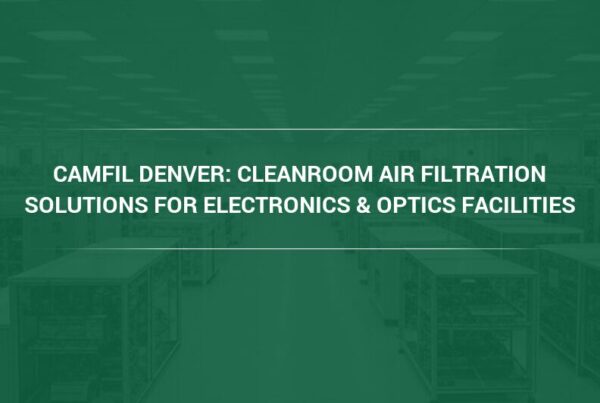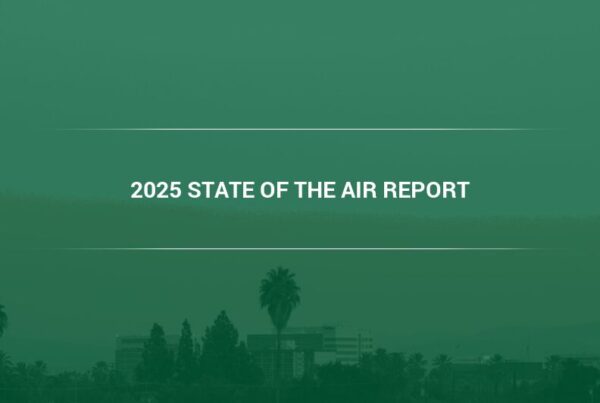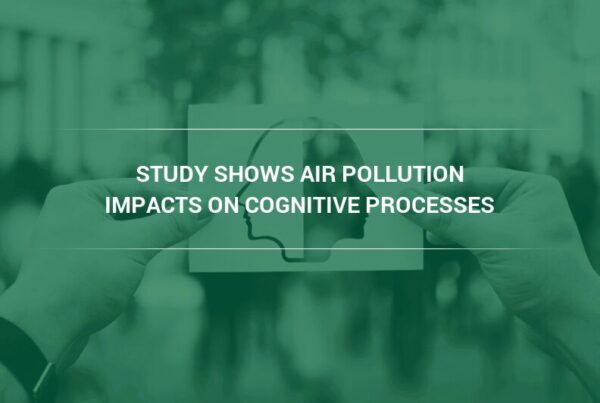Learn how the expertise of chemists could be the key to helping air filter manufacturers fix the problem of air pollution with effective high efficiency air filters.
By now, it’s no secret that poor air quality caused by air pollution affects the quality of life and lifespan of human beings. It’s a problem recognized by air filter manufacturers, which, for years, have tried to develop better and more affordable air filtration systems for a wide range of applications.
But what most people don’t know is that the makeup of the atmosphere also affects how long airborne pollutants stay in the air. This lack of atmospheric knowledge is where the expertise of chemists comes in, and has the potential of being a game changer.
For instance, we already know that outdoor air pollution affects indoor air quality.
“Indoor air pollution is made of outdoor air pollutants,” explained Charlie Seyffer, Manager of Marketing & Technical Materials at Camfil USA. “This includes heating and traffic particles, gases that infiltrate our buildings, as well as chemical emissions from building materials, DIY products, cleaning products, air fresheners, combustion particles from heating, cooking and candles, pet allergens, electronics, and appliance off-gassing.”
The problem is that the air purification industry knows very little about how different atmospheric components affect the toxicity of particulate matter (PM) and other airborne pollutants.
How the Largest Air Filter Manufacturers Can Take Advantage of Chemical Information
Knowing how different compounds contribute to PM toxicity levels can make a huge difference in creating policy strategies to reduce the number of deaths linked to air pollution—for example, by setting strict limits on levels of certain toxic compounds in the air, or helping the largest air filter manufacturers design systems that target a specific pollutant.
But this is far easier said than done for several reasons.
- Firstly, air pollution is produced by a host of sources, from residential heating and cooking to vehicle emissions and power generation.
- Secondly, it’s hard to track chemical reactions in the atmosphere. Scientists are only scratching the surface of how ozone and particulate matter—most of which are secondary pollutants—form in the atmosphere. Experts know that these pollutants come from artificial sources, but they are also triggered by environmental factors like heat, humidity, and wind patterns.
- Thirdly, pollutants don’t exist in a vacuum. Ozone levels, for example, increase as reactions between nitric oxide (NO) and volatile organic compounds (VOCs) rise. However, even as the EU has managed to reduce emissions of NO and VOCs by at least two percent every year since the 2000s, ozone levels in the region have remained constant.
Helping the Work Done by Air Filter Manufacturing Companies
Chemists can help air filter manufacturing companies by revealing how certain elements, pollutants, or atmospheric conditions react with one another to reduce air quality levels.
For example, carbon black, commonly known as soot, and other carbonaceous compounds can combine with carcinogenic polycyclic aromatic hydrocarbons, making it important for air filters to capture and remove both substances. Likewise, many air filtration systems are unable to capture and remove ultrafine particulate matter through mechanical filtration—chemists can provide insights on how to use filter media such as activated carbon to make high efficiency filters more efficient at capturing PM2.5, harmful particles under 2.5 microns in size.
The Input of Chemists Goes Beyond High Efficiency Air Filters
The work that chemists can do on the air pollution front also goes beyond creating better, more efficient air filters. Chemists can also shed light on the molecular interactions between airborne pollutants and the body’s immune system, revealing which particles or gasses are most dangerous to human health. In addition, they can develop experimental models to track the interactions between airborne pollutants and skin or the fluids lining the lungs and airways. This information can be cross-referenced with other physical-chemistry experiments and existing biomedical data to understand how the body responds to poor air quality.
Chemists and Top Air Filter Manufacturers Working Together for Breathable Air
Together, atmospheric chemists and the world’s top air filter manufacturers can work together to be more active in public-health research. Aside from cutting-edge air filtration systems, this partnership can also produce advanced and affordable methods of measuring ambient air quality and the levels of specific airborne pollutants that represent the greatest danger to the public. This information is especially important in data-scarce parts of the world bearing the brunt of polluted air such as Asia, South America and Africa.
What’s Next for Commercial Air Filters?
The innovative work done by chemists and air filter makers means that commercial air filters are only going to become more advanced and efficient in the near future. For instance, there’s a lot of excitement in the industry over the potential of molecular air filtration systems and their ability to remove gaseous pollutants like ozone when used alongside high efficiency filters. Tomorrow’s air filters may also come with control panels, which indicate ambient air quality levels and information on the presence of specific pollutants.
For more than 50 years, Camfil USA has been at the forefront of the air purifier industry, protecting homes and buildings from polluted air. To learn about the importance of protecting indoor air quality from outdoor air pollution, talk to Camfil USA. As one of the world’s top commercial air filter manufacturers, we have a wide range of commercial air filters for you to explore.
Lynne Laake
Camfil USA Air Filters
T: 888.599.6620
B: Find Tips on Sustainability from Camfil
F: Friend Camfil USA on Facebook



